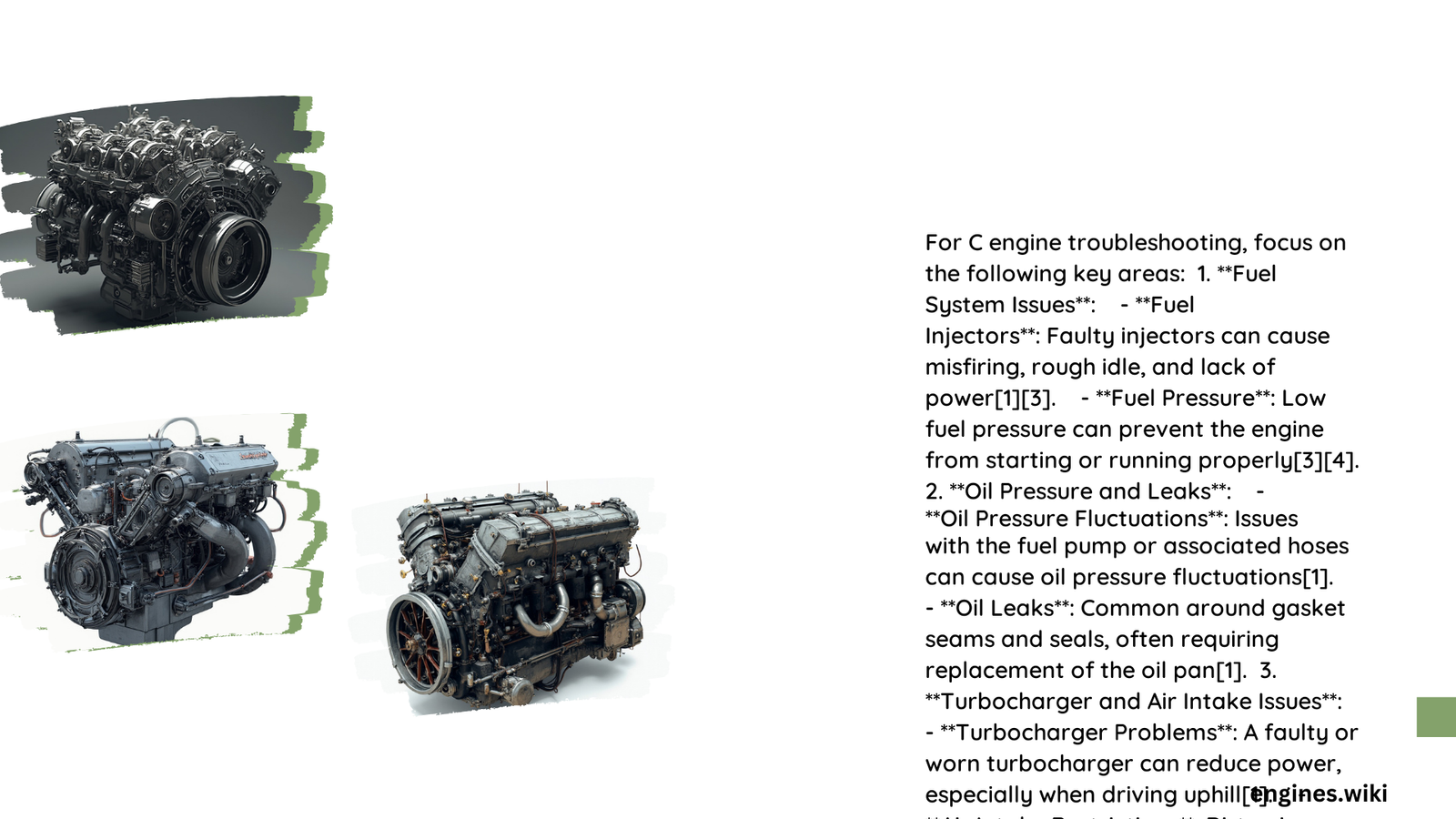C engine troubleshooting involves a systematic approach to identify and resolve issues in combustion engines. This process requires a thorough understanding of engine components, diagnostic tools, and common problems. From misfires to overheating, proper troubleshooting can save time and money while ensuring optimal engine performance. This guide provides detailed steps, measurements, and tools for effective C engine diagnostics and repair.
What Are the Key Steps in C Engine Troubleshooting?
- Visual Inspection: Always start with a thorough visual check of the engine.
- Diagnostic Tool Usage: Employ OBD-II scanners and other specialized tools.
- Systematic Testing: Perform tests on various engine systems methodically.
- Data Analysis: Interpret diagnostic data to pinpoint the root cause.
- Repair and Verification: Fix the identified issue and verify the repair.
How to Diagnose Engine Misfires?

Engine misfires can be tricky to diagnose but following these steps can help:
- Check Spark Plugs:
- Remove and inspect spark plugs for wear or fouling.
-
Use a spark plug gap tool to ensure proper gap (0.028-0.060 inches).
-
Perform Compression Tests:
- Use a compression gauge to check cylinder health.
-
Ideal readings: 120-180 psi.
-
Test Ignition System:
- Check resistance of ignition coils and spark plug wires.
-
Use a multimeter to ensure values are within manufacturer specs.
-
Examine Fuel Injectors:
- Test fuel injector flow rates (30-50 lbs/hr).
-
Measure injector resistance (typically 12-16 ohms).
-
Inspect Fuel System:
- Check fuel filters for clogs.
- Look for leaks or blockages in fuel lines.
What Tools Are Essential for C Engine Troubleshooting?
| Tool | Purpose | Typical Measurements |
|---|---|---|
| Compression Gauge | Measure cylinder compression | 120-180 psi |
| Spark Plug Gap Tool | Set spark plug gap | 0.028-0.060 inches |
| Fuel Injector Flow Test Kit | Measure injector flow rates | 30-50 lbs/hr |
| Multimeter | Check electrical components | Varies by component |
| OBD-II Scanner | Read engine error codes | N/A |
How to Address Engine Overheating Issues?
Engine overheating can cause severe damage if not addressed promptly. Here’s how to troubleshoot:
- Check Coolant Level and Leaks:
- Ensure proper coolant level (50/50 mix of ethylene glycol and water).
-
Inspect hoses, radiator, and water pump for leaks.
-
Test Thermostat Function:
- Replace thermostat if stuck open or closed.
-
Normal operating temperature: 195-220°F.
-
Perform Radiator Pressure Test:
- Use a pressure test kit to check for leaks or blockages.
-
Normal pressure range: 15-20 psi.
-
Monitor Temperature Gauge:
- Observe engine temperature during operation.
- Ensure it stays within the normal range.
What Are Common Oil Pressure Problems and Solutions?
Oil pressure issues can lead to severe engine damage. Here’s how to diagnose and address them:
- Understand Normal Oil Pressure Ranges:
- Idle: 10-20 psi
-
Cruising: 40-60 psi
-
Check for Oil Pump Failure:
- Use an oil pressure gauge to test pressure.
-
Inspect oil pump for wear or damage.
-
Examine Oil Filters:
- Replace clogged oil filters.
-
Use recommended oil viscosity (e.g., 5W-30).
-
Verify Oil Level and Viscosity:
- Maintain proper oil level.
- Use manufacturer-specified oil viscosity.
How to Troubleshoot Fuel System Issues?
Fuel system problems can cause poor performance and misfires. Follow these steps:
- Check Fuel Pressure:
- Normal range: 30-50 psi for most systems.
-
Use a fuel pressure test kit at the fuel rail.
-
Inspect Fuel Filters:
- Look for clogging or dirt accumulation.
-
Replace if necessary to ensure proper fuel flow.
-
Test Fuel Injectors:
- Measure resistance (12-16 ohms typically).
-
Check flow rates (30-50 lbs/hr).
-
Examine Fuel Lines:
- Look for leaks or blockages.
- Ensure all connections are secure.
What Are Key Measurements in C Engine Troubleshooting?
- Compression: 120-180 psi
- Spark plug gap: 0.028-0.060 inches
- Fuel injector flow rate: 30-50 lbs/hr
- Oil pressure (idle): 10-20 psi
- Oil pressure (cruising): 40-60 psi
- Engine operating temperature: 195-220°F
- Fuel pressure: 30-50 psi
- Radiator pressure: 15-20 psi
By following these detailed steps and using the right tools and measurements, you can effectively troubleshoot most C engine issues. Remember to always consult your vehicle’s specific manual for exact specifications and procedures.
